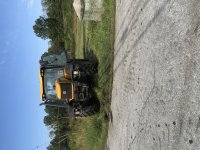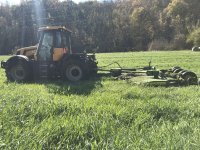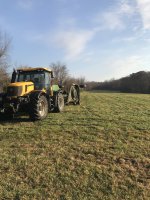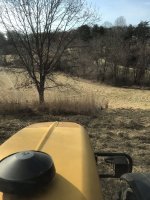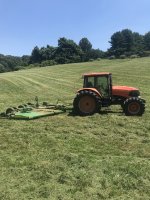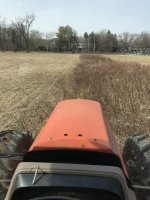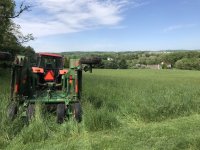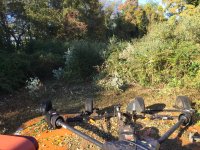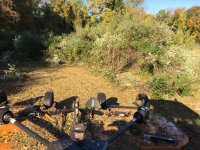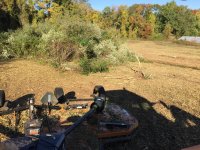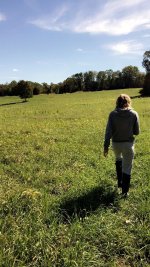Possibly, but I mow a LOT of conservancy land and after 30 years of it, I can tell you 1 mowing and you値l have small 15 woody invasives (pear, locust) blackberry stickers and multi flora rose, just to name a few. It won稚 be ideal for walking unless you mow paths through it.
2 mowings and you have a LOT less of the above.
3 mowings or more and you have none of the above.
If you want soft meadow grass without stickers or woody invasive species, 2 cuts is the minimum.
A meadow can be interpreted in many ways. I would call that a tall soft grass species capable of being a mixed grass hay. Others would allow some woody plants and a wide variety of other species with less frequent cuttings. Nothing wrong with either, just trying to give you a visual.
Below, I included some field mowing pictures. We mow and cut hay on fields in several states. The first photo (kind of blurry) is a 30 acre field cut 4 times a year. It looks like a tall lawn.
The 3 where you see me looking out the back window at the Woods 15? batwing are me cutting down years of overgrowth, restoring back to a hay field.
The JCB tractor is a customer that gets 1 cut per year, except for the one with the JCB and the round bales in the background. That is cut 3x/yr. Note how much softer and grass-like it is with more cuts?
In picture #7 (looking over the orange Kubota
M135x hood) you see I’m cutting lots of blackberry stems and goldenrod stems. This was once a hay field. It was taken out of service 25 years ago and is now a 1X cut meadow. Notice it’s been 90% overtaken by the stickers and goldenrod?
Each time I cut the 1X places, there?s stickers, multi flora and broomsedge. Not a good sign if you want soft meadow grass, but great cover for deer, fox and rabbits. Let it go longer and you?ll have a great hawk, owl and bald eagle sanctuary.
The last picture with the lady walking is what would be a typical late summer/early fall walk through a meadow that was cut earlier in the year and is untreated. Notice the invasives already coming in? You can see evidence of thistle, hemp dogbane, and horse nettle making their way into the field.
Only way to keep it out is intensive mowing.
I have a lot more pictures if you need any more perspectives.

